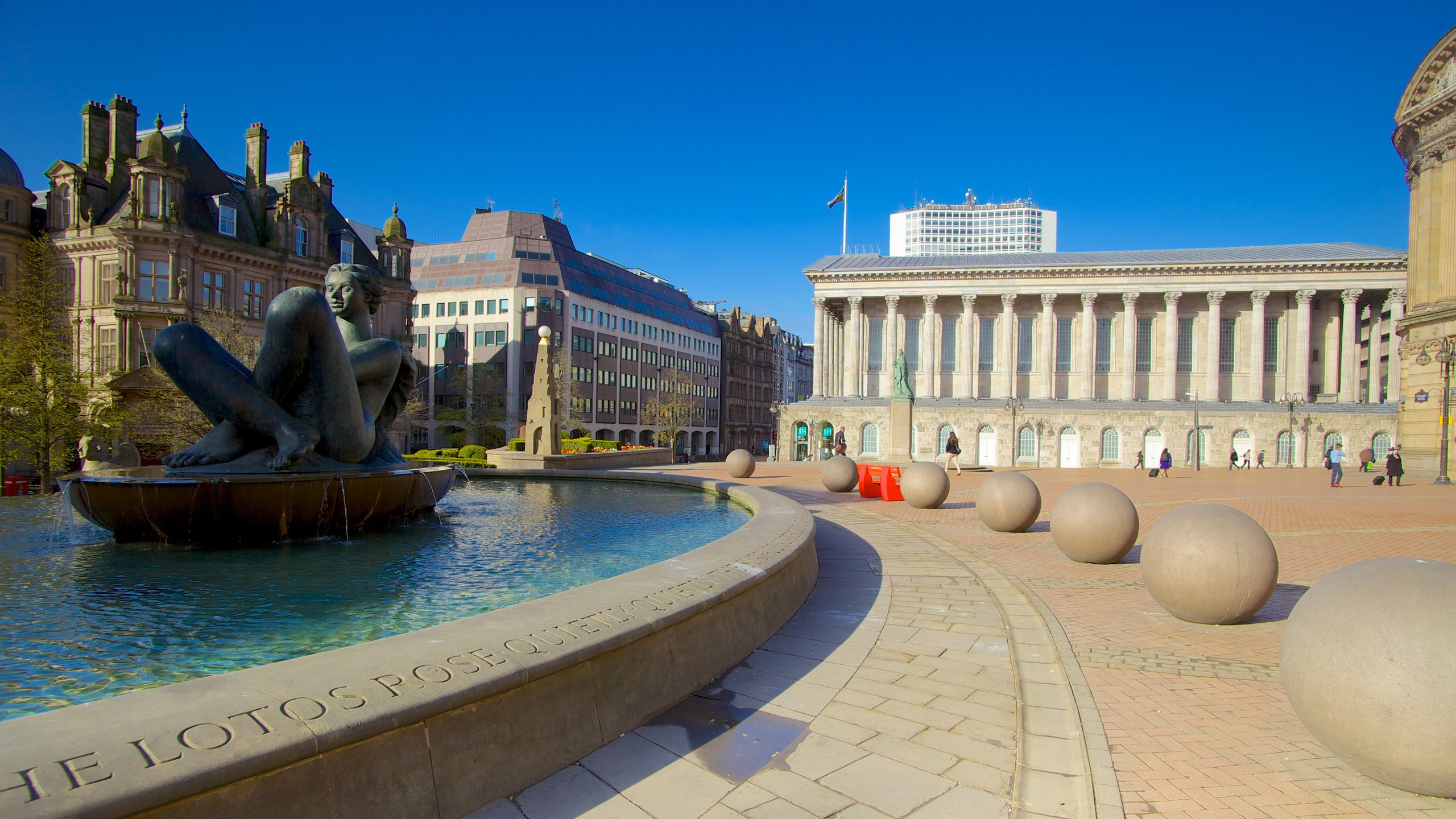The best free self-guided walking tours
Birmingham 1
Victoria Square – Birmingham’s Industrial Legacy in Stone
At first glance, Victoria Square appears as a grand civic space crowned by classical architecture, but look closer and every detail tells the story of Birmingham’s industrial prosperity. The square represents the moment when the “Workshop of the World” flexed its economic muscle and created a public space to rival any European capital.
The commanding Council House (1874-79), with its soaring “Big Brum” clock tower, was built quite literally on industrial profits – its construction funded by the booming manufacturing trades that made Victorian Birmingham wealthy. The classical Renaissance design was chosen deliberately to project Birmingham’s status as a global industrial powerhouse. Look for the intricate carvings around its windows and doors that include industrial motifs: beehives representing industry, ships showing global trade, and figures of industry and commerce.
The square’s focal point, Victoria’s statue, tells another industrial story. Cast in 1901 by Birmingham-born sculptor Thomas Brock, it demonstrated the city’s mastery of metalworking on a monumental scale. The statue was deliberately positioned to face the Council House rather than down New Street – a statement about the power of local government in managing the city’s industrial growth.
Even the square’s modern elements reflect industrial heritage. The “Iron: Man” sculpture by Antony Gormley deliberately uses Birmingham’s industrial materials – iron and steel – to create a figure that seems to emerge from the city’s manufacturing past. The piece was cast at a local foundry, continuing Birmingham’s metalworking traditions.
The square’s famous “Floozie in the Jacuzzi” fountain (formally “The River”) sits where a previous Victorian fountain once stood. That original fountain was powered by the same industrial steam engines that drove the city’s factories. Though the modern fountain is now a floral feature, its cascading design echoes the flow of water that was so crucial to Birmingham’s industrial processes.
Look down at the paving and you’ll find another industrial connection – the yorkstone and granite used here came from the same quarries that supplied Birmingham’s factories and workshops. The square’s Victorian lampposts, though restored, are original and were manufactured in local foundries.
Around the edges of the square, the former Post Office building (now a hotel) represents the communications infrastructure that supported Birmingham’s global trade. Its sorting office handled millions of commercial letters and orders that kept the city’s industries running.
From this elevated position, you can appreciate how the square connects to the older industrial districts. Looking down Paradise Street, you’ll see how the land slopes away towards the canal network that transported raw materials and finished goods. The height difference between the square and these lower areas was used to Birmingham’s advantage – gravity helped move goods downhill to the canals.
Stand in the centre of the square and you’re at what was once the commercial brain of industrial Birmingham. From here, deals were struck, materials were traded, and the products of thousands of workshops and factories were sold across the Empire and beyond.
Next, we’ll head to the Birmingham Museum and Art Gallery to see how the city’s industrial wealth was transformed into cultural capital…

